Abstract
It was investigated whether or not the human blood group isoantibodies A and B could be induced by immunogenic stimuli via natural routes with a kind of antigenic substance to which all humans are commonly exposed, or if the appearance of these antibodies is independent of antigenic stimuli as has long been believed.
Escherichia coli O86, which possess high human blood group B and faint A activity in vitro, were fed to healthy humans and those with intestinal disorders. 80% of the sick individuals of blood group O and A responded with a significant rise of anti-B antibodies which was frequently de novo in infants; significant increase of anti-A isoantibodies among blood group O individuals was less frequent. Over one-third of the healthy individuals also had a significant isoantibody increase. Intestinal lesions favor isoantibody stimulation by intestinal bacteria; this view was supported by the study of control infants. Persons of blood group A responded more frequently with anti-B and anti-E. coli O86 antibody production than those of blood group O. Isoantibody increase was accompanied with antibody rise against E. coli O86. Inhalation of E. coli O86 or blood group AH(O)-specific hog mucin also evoked isoantibodies.
The induced isoantibodies were specifically inhibited by small amounts of human blood group substances. E. coli O86-induced anti-blood group antibodies in germ-free chickens and preexisting blood group antibodies in ordinary chickens were neutralized by intravenous injection of E. coli O86 lipopolysaccharide.
This study demonstrates that human isoantibodies A and B are readily elicited via physiological routes, by blood group-active E. coli, provided the genetically determined apparatus of the host is responsive. Antibodies against a person's own blood group were not formed. Interpretation of these results permits some careful generalizations as to the origin of so-called natural antibodies.
Full text
PDF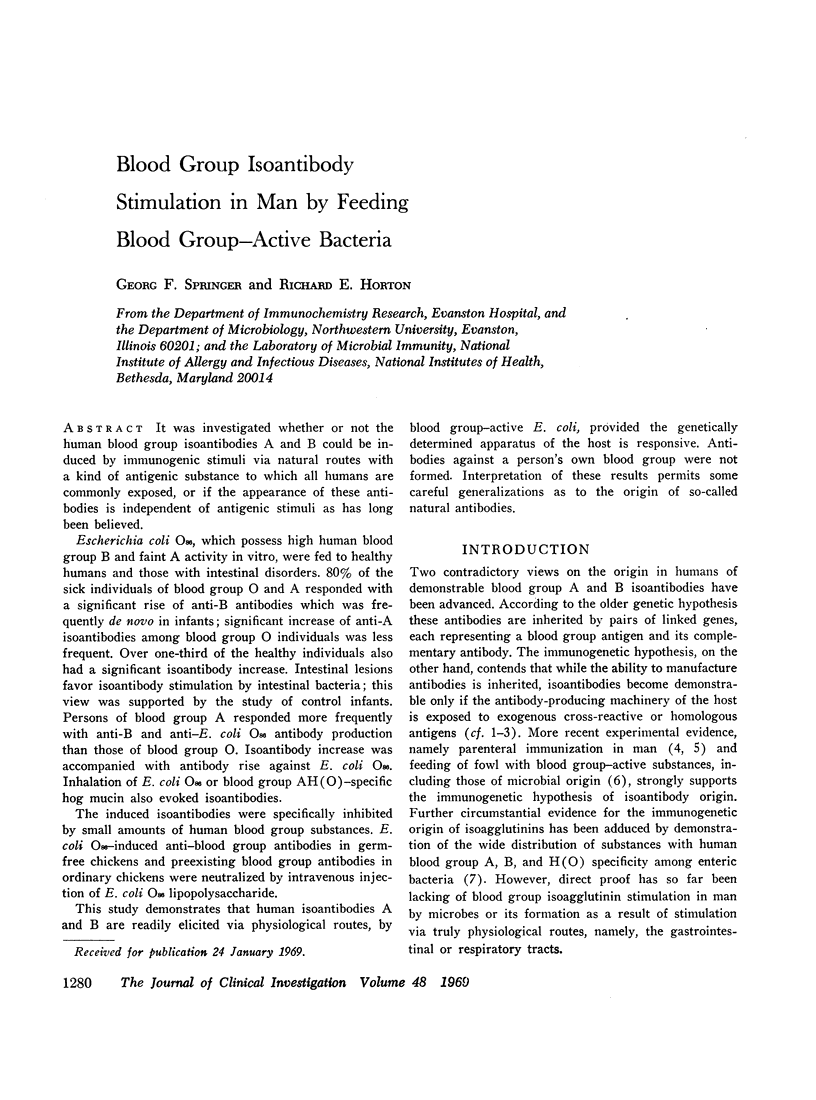



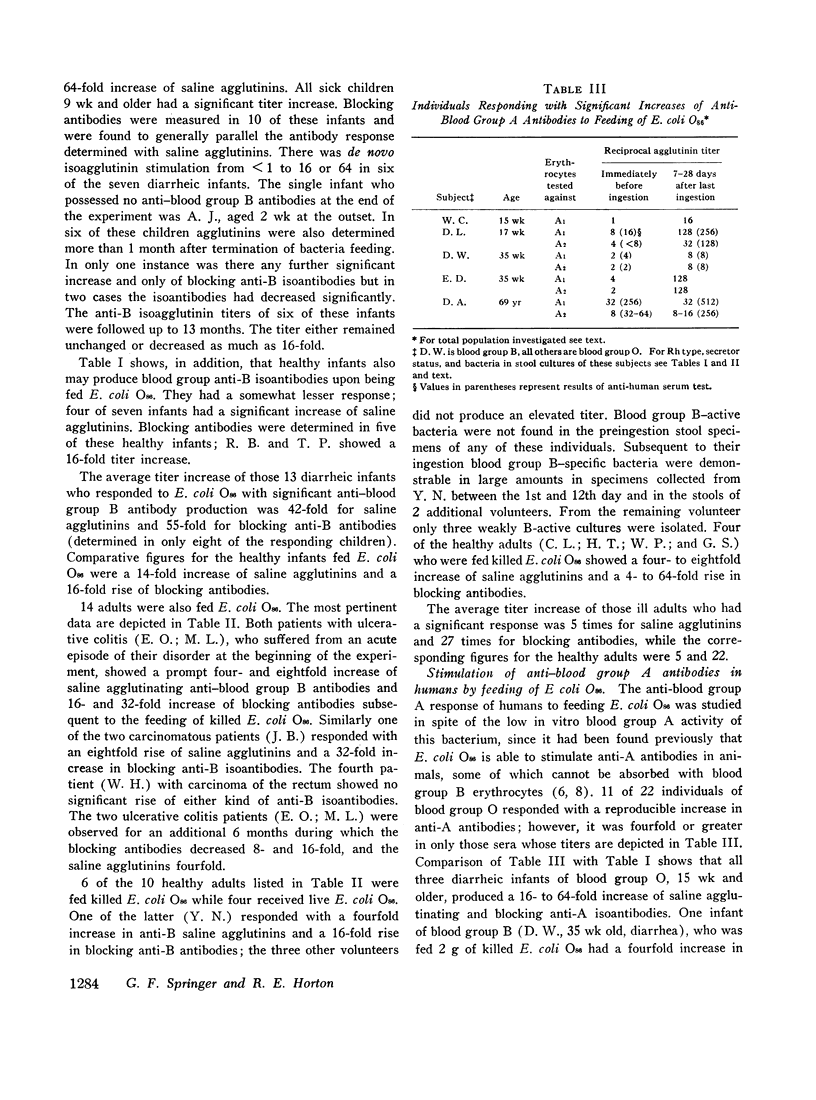

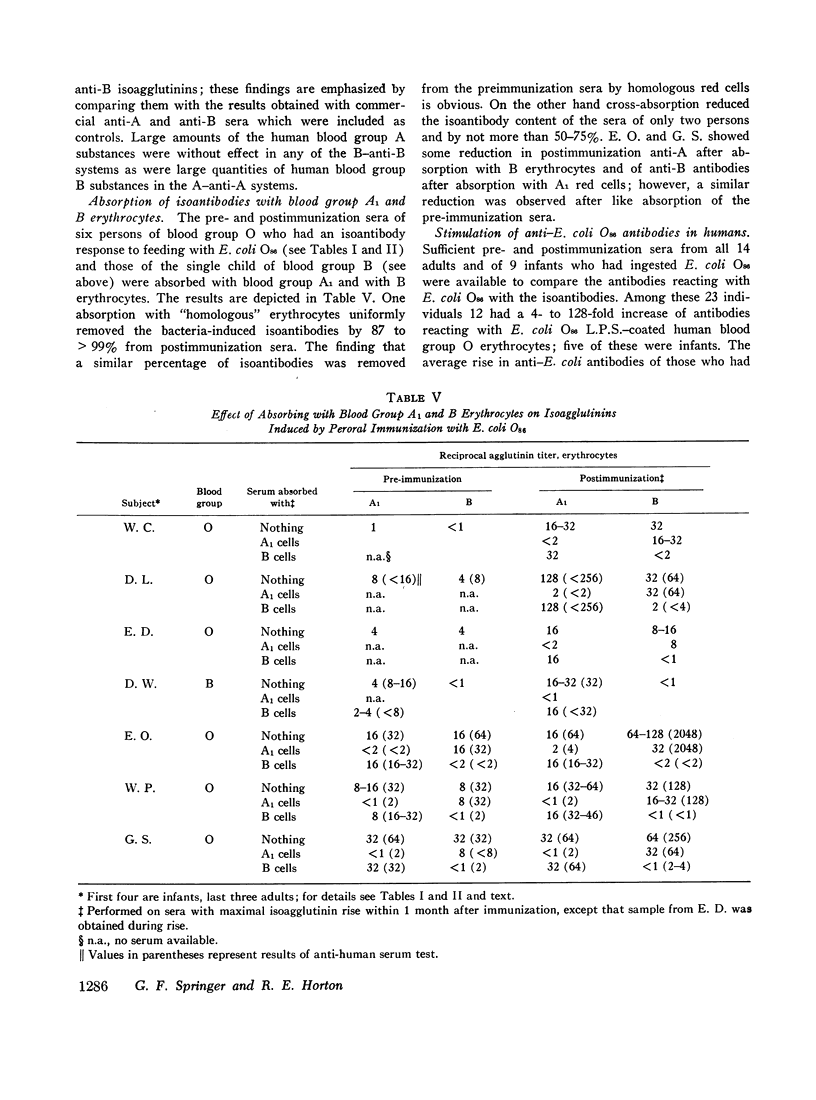

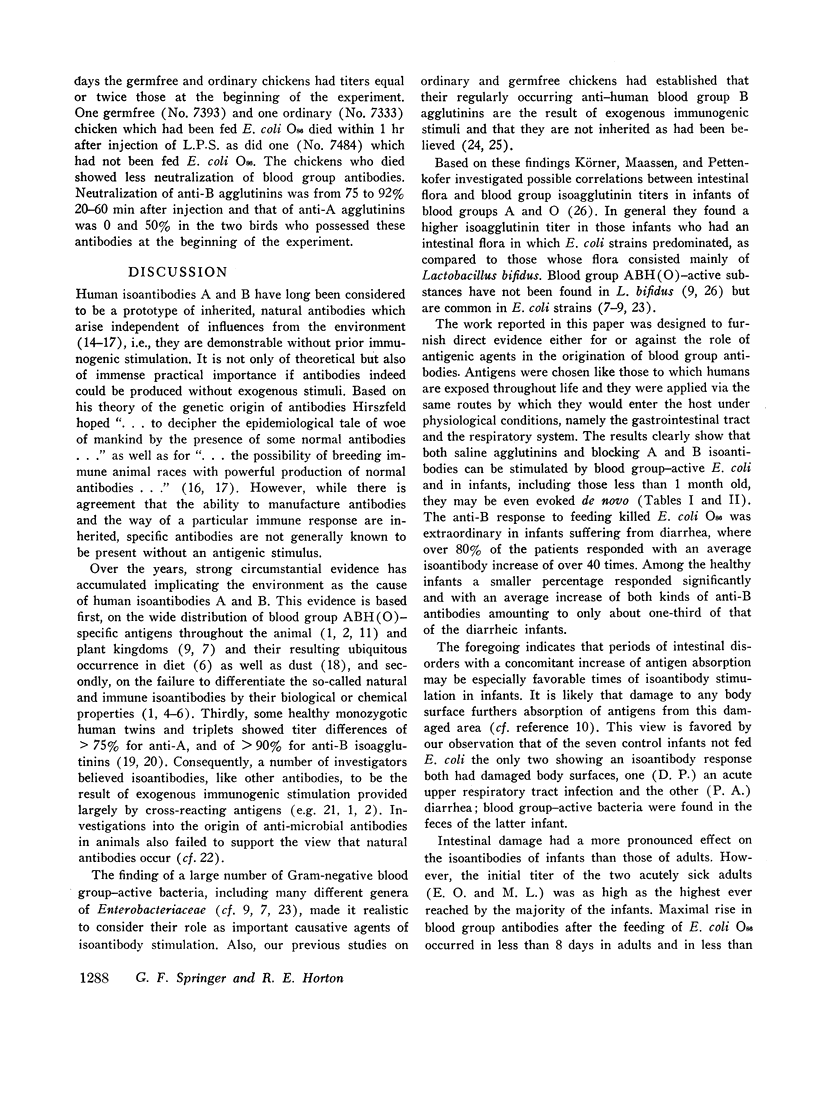
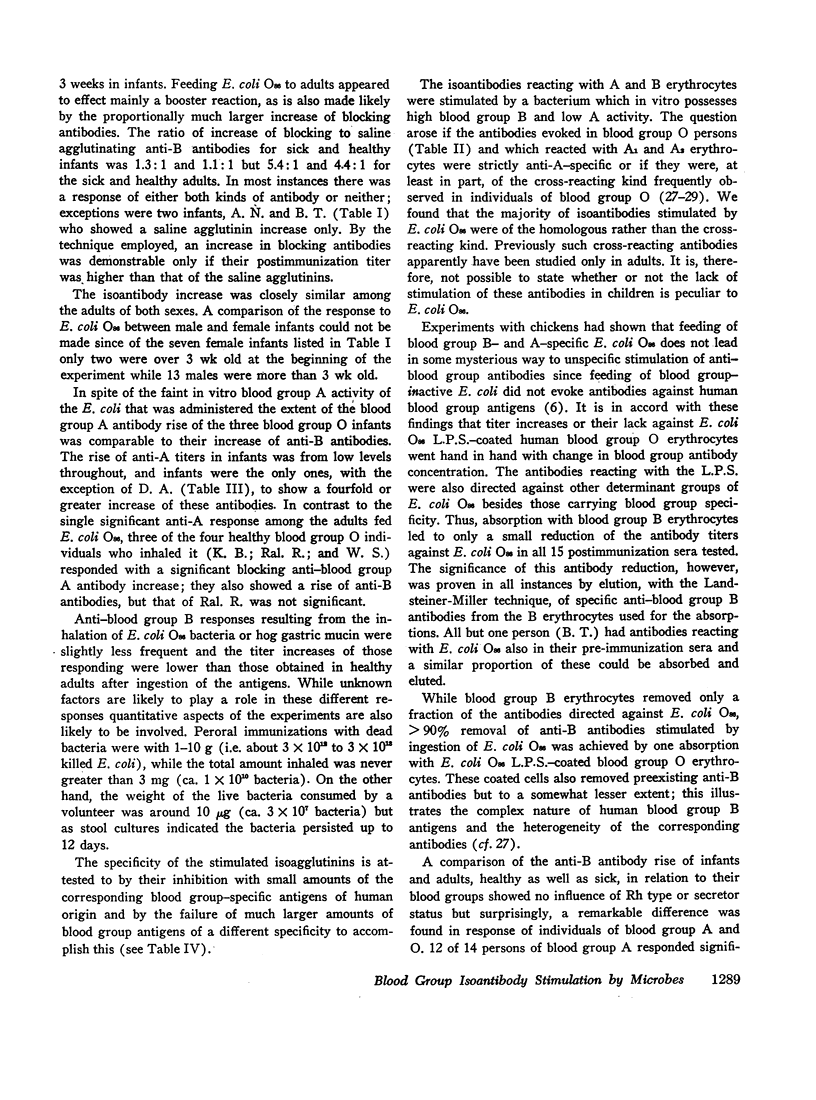
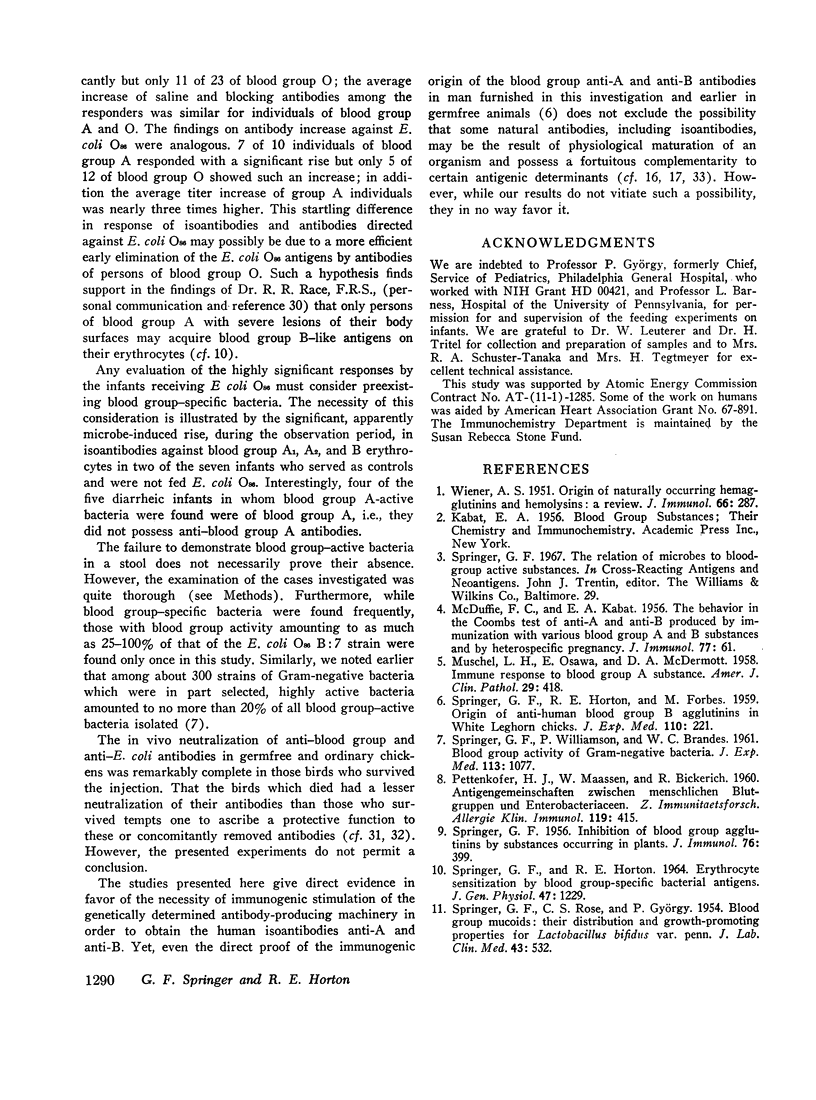

Selected References
These references are in PubMed. This may not be the complete list of references from this article.
- CAMERON C., GRAHAM F., DUNSFORD I., SICKLES G., MACPHERSON C. R., CAHAN A., SANGER R., RACE R. R. Acquisition of a B-like antigen by red blood cells. Br Med J. 1959 Jul 11;2(5140):29–32. doi: 10.1136/bmj.2.5140.29. [DOI] [PMC free article] [PubMed] [Google Scholar]
- Hook W. A., Toussaint A. J., Simonton L. A., Muschel L. H. Appearance of natural antibodies in young rabbits. Nature. 1966 Apr 30;210(5035):543–544. doi: 10.1038/210543a0. [DOI] [PubMed] [Google Scholar]
- Kim Y. B., Watson D. W. Role of antibodies in reactions to gram-negative bacterial endotoxins. Ann N Y Acad Sci. 1966 Jun 30;133(2):727–745. doi: 10.1111/j.1749-6632.1966.tb52402.x. [DOI] [PubMed] [Google Scholar]
- MCDUFFIE F. C., KABAT E. A. The behavior in the Coombs test of anti-A and anti-B produced by immunization with various blood group A and B substances and by heterospecific pregnancy. J Immunol. 1956 Jul;77(1):61–71. [PubMed] [Google Scholar]
- MUSCHEL L. H., OSAWA E., McDERMOTT D. A. Immune response to blood group A substance. Am J Clin Pathol. 1958 May;29(5):418–425. doi: 10.1093/ajcp/29.5.418. [DOI] [PubMed] [Google Scholar]
- OWEN R. D. Heterogeneity of antibodies to the human blood groups in normal and immune sera. J Immunol. 1954 Jul;73(1):29–39. [PubMed] [Google Scholar]
- SPRINGER G. F., DESAI P. R., KOLECKI B. SYNTHESIS AND IMMUNOCHEMISTRY OF FUCOSE METHYL ETHERS AND THEIR METHYLGLYCOSIDES. Biochemistry. 1964 Aug;3:1076–1085. doi: 10.1021/bi00896a012. [DOI] [PubMed] [Google Scholar]
- SPRINGER G. F., HORTON R. E. ERYTHROCYTE SENSITIZATION BY BLOOD GROUP-SPECIFIC BACTERIAL ANTIGENS. J Gen Physiol. 1964 Jul;47:1229–1250. doi: 10.1085/jgp.47.6.1229. [DOI] [PMC free article] [PubMed] [Google Scholar]
- SPRINGER G. F., HORTON R. E., FORBES M. [Origin of anti-human blood group B agglutinins in white Leghorn chicks]. J Exp Med. 1959 Aug 1;110(2):221–244. doi: 10.1084/jem.110.2.221. [DOI] [PMC free article] [PubMed] [Google Scholar]
- SPRINGER G. F. Inhibition of blood-group agglutinins by substances occurring in plants. J Immunol. 1956 Jun;76(6):399–407. [PubMed] [Google Scholar]
- SPRINGER G. F., ROSE C. S., GYORGY P. Blood group mucoids: their distribution and growth-promoting properties for Lactobacillus bifidus var. Penn. J Lab Clin Med. 1954 Apr;43(4):532–542. [PubMed] [Google Scholar]
- SPRINGER G. F. Relation of blood group active plant substances to human blood groups. Acta Haematol. 1958 Jul-Oct;20(1-4):147–155. doi: 10.1159/000205477. [DOI] [PubMed] [Google Scholar]
- SPRINGER G. F., SCHUSTER R. STIMULATION OF ISOHEMOLYSINS AND ISOHEMAGGLUTININS BY INFLUENZA VIRUS PREPARATIONS. Vox Sang. 1964 Sep-Oct;9:589–598. doi: 10.1111/j.1423-0410.1964.tb03329.x. [DOI] [PubMed] [Google Scholar]
- Tate W. J., 3rd, Douglas H., Braude A. I., Wells W. W. Protection against lethality of E. coli endotoxin with "O" antiserum. Ann N Y Acad Sci. 1966 Jun 30;133(2):746–762. doi: 10.1111/j.1749-6632.1966.tb52403.x. [DOI] [PubMed] [Google Scholar]
- UNGER L. J., WIENER A. S. Studies on the C antibody of group O serum with special reference to its role in hemolytic disease of the newborn. J Lab Clin Med. 1954 Sep;44(3):387–399. [PubMed] [Google Scholar]
- WIENER A. S. Origin of naturally occurring hemagglutinins and hemolysins; a review. J Immunol. 1951 Feb;66(2):287–295. [PubMed] [Google Scholar]


